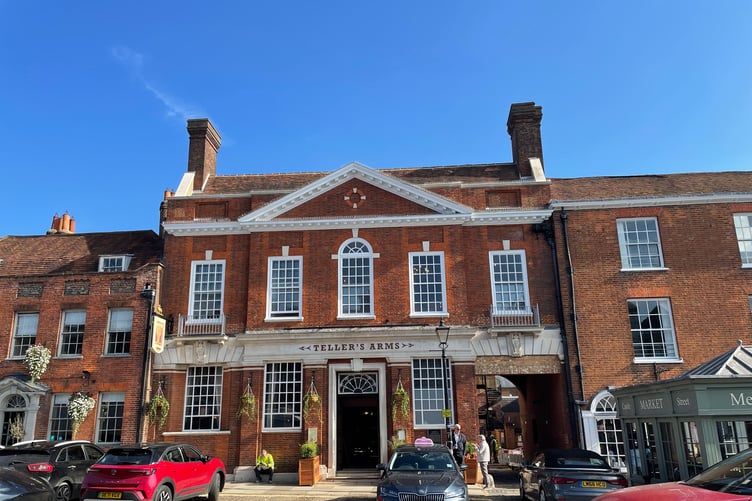Farnham’s traffic woes demand clear solutions
I have now lived in Farnham for 19 years, many of them working in the town centre, and now living in the town centre.
This has given me plenty of scope of observing the traffic. I do not believe that the Farnham Infrastructure Plan will cause worse traffic. The top of Downing Street has always been single width, and the newly narrowed East Street is not the direct cause of traffic jams.
One matter which does cause traffic build up is vehicles unloading, and even parking, on the no loading restrictions - often three at a time - as if the no loading restrictions don't exist.
I know that premises need deliveries, but premises in pedestrianised towns have found solutions.
We need a consistent no loading restriction and it to be actually being enforced. Surrey County Council staff are quick to ticket motorists otherwise legitimately parked in on street bays who have overstayed, but I have never seen a single vehicle breaking the no loading restrictions ticketed, and there are many such incidents each day.
The level crossing gates now closing for double the time per hour since the Guildford trains were introduced does cause a backlog into South Street (and hence the rest of the town centre) at peak times. This surely strengthens the case for major changes at Hickleys Corner.
All north-south traffic has to pass through the town centre. If that could be removed by construction of a western bypass from the A287 junction with Beacon Hill Road to Coxbridge Roundabout, this would remove a massive volume of traffic from the town centre.
It would be far more sensible to combine this with the much needed Wrecclesham bypass, and end somewhere towards Holt Pound.
Of course, there will be environmental damage, but there is other environmental damage from the status quo - how do we assess the longterm nature of both? My first suggestion is comparatively cheap and easy to implement, while the latter two suggestions are both complex and very expensive.
However, if we are to see major improvements, rather than incremental steps, the only option will be complete removal of both through traffic and impediments to its flow. If we cannot find the political and practical will for the first, where can we look for the will and the funding for the bigger items?
Michael Hopkins
Crondall Lane
Farnham
Benefits or bottlenecks from road restructure?
There are a number of positive elements to the upcoming town centre road restructuring. It recognises the inefficient accessibility from Castle Street heading to the West and also the inability to head East from Lower Church Lane (Waggon Yard car park). This suggests that local politicians do recognise that for the town centre to thrive it must have vehicle accessibility.
The impending plan will cost more than £10 million but the big question is whether it will significantly improve vehicle accessibility, or not?
My prediction is that it will improve accessibility because of the ability to drive west from Castle Street and east from Lower Church Lane. But, there appears to be potential flaws, which could have a negative impact on traffic flow. The pre-2025 road system was fundamentally flawed for the same reason: a complete lack of traffic flow management.
The primary issue is The Borough. The plan shows that the Castle Street-Borough junction is unmanaged. Traffic will be able to turn left or right, but will only be able to do this when there are gaps in flow from the west and there are no backed-up cars, or pedestrians crossing. This means, at the busiest times, traffic will back-up Castle Street, as before. So no benefit is achieved.
By reducing the eastern half of The Borough to a single lane means that it can hold 50 percent less traffic, which will mean traffic backs-up through the entire Borough leading to gridlock. Reducing the road capacity of The Borough is a mistake as is the recent lane reduction in East Street.
The bottom of Castle Street needs to have flow-co-ordinated traffic lights and a box junction to prevent queuing traffic closing-off flow. Likewise, to optimise traffic flow and pedestrian crossing, no uncontrolled pedestrian crossings should exist in the centre. Crossing roads should only be at traffic lights, not Zebra crossings or raised platforms, because with uncontrolled crossings it is impossible to achieve efficient traffic flow.
If traffic flow management is not addressed the town centre will remain inefficient and inaccessible at the busiest times. Flow management should have been addressed decades ago, ensuring that once a vehicle enters the town centre it will either park or exit within a few minutes, at any time of any day.
Traffic flow control requires computer controlled, linked traffic lights plus sensors, which react to the volume of traffic and also allow pedestrians to cross at regular intervals. This could have been implemented in the town centre without having to change the original road system, probably at significantly less cost and disruption than the re-structuring in 2025.
For Farnham to thrive for everyone the objective should be to get vehicles either parked or through the centre in the shortest and safest possible time. Attempting to provide pedestrians with an enhanced experience is not going to make Farnham thrive. Reducing road capacity, for example removing a lane will not improve accessibility plus, without an effective flow-control system, will increase congestion.
In theory the restructured roads could lead to less congestion but, the revised system creates new issues, which if not addressed will (markedly?) reduce the efficiency of the system, meaning the large financial investment will not deliver what is actually needed; consistent vehicle accessibility for residents, businesses and visitors. All of which is a prerequisite for the town to succeed.
I predict people will recognise there is some benefit from the restructured system; however, it will be far from optimal unless an effective traffic flow system is also installed.
Jeremy Daines
Shady Nook
Farnham
Don’t bank on pub’s past

The Times newspaper is currently running a competition for a stay at The Teller's Arms, Farnham.
I quote: "A traditional British pub that blends timeless charm with modern touches.”
Can this pub be a traditional pub when until November 2023 the listed building was a branch of Lloyds Bank? A new pub: yes; a traditional pub: no.
Tempe Mansfield
Farnham




Comments
This article has no comments yet. Be the first to leave a comment.